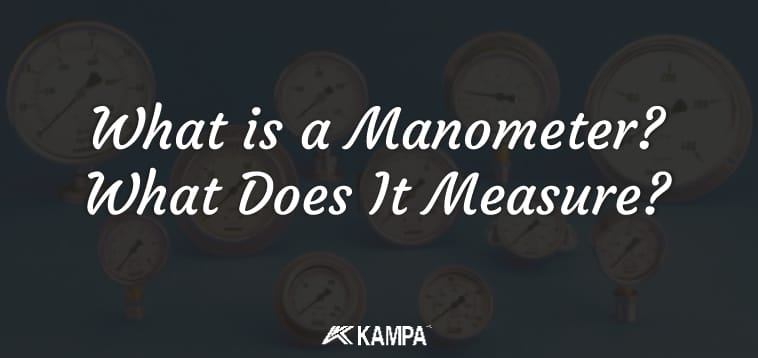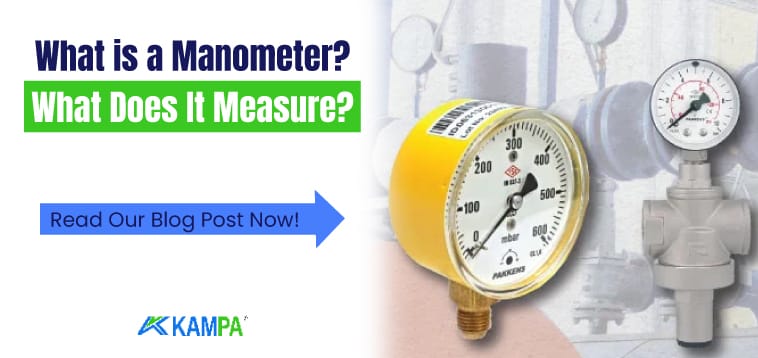What is a Manometer? What Does It Measure?
Hello dear readers, today we will tell you what a manometer is, one of the oldest pressure measuring devices still in use today.

Table of Contents
We use it to measure pressure at low intervals. In simpler terms, pressure gauge models are a part that measures pressure. Click to examine and purchase a sample of the pakkens manometer
We use it to measure the pressure of gaseous or liquid fluids. We usually use it to measure the pressure of a gas in a closed container.
The types of manometers used in building installations generally help to show the pressure value in the boiler room. Liquids and gases apply pressure to the container they are in.
Varieties containing liquids move and change level depending on the pressure applied. The level height gives us information about the pressure of the liquid or gas.
In industrial applications, we use it to control the pressure required by the system. As a manometer, it has maximum and minimum values and there is always information on it.
We use it to ensure safety in the installation and monitoring of the use of LPG products and in the installation, replacement and repair of natural gas products. It is very important that liquid manometers or different manometers are of high quality and for our needs.
Depending on this pressure, we produce different types of monometer. As a liquid monometer you can quickly see if the breathing pressure is high or not.
It is a U-shaped glass tube partially filled with liquid. U-Tube is a pressure gauge. They are usually made of transparent plastic. Refers to a U-shaped tube partially filled with liquid.
We see it a lot in physics and chemistry.

You can easily build this type of pressure gauge as part of a laboratory experiment to demonstrate the effect of air pressure on a liquid column.

How is pressure calculated?
The pressure exerted by a fluid column can be given by the equation P=hdg. In this equation
P= Calculated pressure
H= Height of the liquid
G= Gravitational force
D = Density of the liquid
Since the monometer measures a pressure difference rather than an absolute pressure, we use the substitution P= Pa-P0. In this substitution, Pa is the test pressure and P0 is the reference pressure.
Pressure Gauge Areas of Use?
- Air conditioners
- Compressed air lines
- Health devices
- Hydraulic systems
- Heating installations
- Water pumps
- Water circulation systems, etc.
- Heating and air conditioning machines
- Machine production

What is a manometer and how to choose it?
You need to buy according to how many bars you have. Bar; Air pressure means air pressure, you can provide a comfortable use by providing a purchase according to how many bars you need.
What is a manometer? They are devices used to measure the pressure of liquids and gases.
What is a Manometer? Points to Consider When Choosing1. What is a Manometer? Points to Consider When Choosing
What is a manometer? Let’s look again by drawing attention to the criteria we should pay attention to your questions such as where it is used.
Environment Conditions
The environment in which the pressure gauges operate must be suitable for factors such as temperature, humidity, corrosion and vibration. For example, when the ambient conditions are corrosive and contain large particles, or if exposed to wet humid environments such as rain, dampness, etc., the pressure gauge should be specified with an airtight coating or liquid filling.
Process Environment
The wet parts of the manometers, i.e. the parts in contact with the pressure measuring medium, such as the bourdon tube and socket, should be made of materials suitable for the process environment. For example, to measure the pressure of an acidic or alkaline liquid, a manometer made of durable materials such as stainless steel or plastic should be selected.
Scale Value
When choosing the dial scale of the manometers, the measurement area should be 3/4 of the scale for static pressures and 2/3 for dynamic pressures. In addition, the maximum scale value of the manometer should be close to the measured pressure. For example, to measure a pressure between 0-10 bar, a manometer with a scale value of 0-16 bar should be selected.
Mounting Method
The way manometers are mounted is also a factor affecting their performance. When in use, the manometer should be installed vertically in a position that is easy to observe and maintain.
When mounting on a wall, choose a manometer with an edge; when mounting directly on a pipeline, choose a manometer without an edge; when measuring gas directly, choose a manometer with a safety hole on the back of the case.
What is a Glycerin Pressure Gauge?

What is glycerin manometer, liquid filled gauges are manufactured with the most commonly used liquid in gauges. Glycerin-filled gaugesare a good value and provide the best vibration damping for applications at room temperature.
In other words; Glycerine type monometer is preferred in areas with continuous vibration, sudden pressure drop or rise, and shaking. It is designed to work in the most difficult conditions with sudden loads and pressure fluctuations.
Used in high pressure and pulsating systems. At the pump outlet, it shows the pressure at a stable point by absorbing vibrations.
Manometre Nedir? Çalışma İlkeleri Nelerdir?
The device works according to the Pascal principle, with a system that lengthens and shortens according to the air pressure and a display that shows this to the user.
The elements transmitting pressure to the mechanism must be protected against aggressive, vaporous environmental conditions.
Glycerin pressure gauge is suitable for use in pumps, compressors, presses, hydraulic plants.
What is a manometer? Thank you for reading our blog post.
As @kampaticaret we are waiting for your likes and comments on instagram.
Just click on the link to contact us.
To read our other blog posts, just click on information about hardware and plumbing. Click here to review manometer prices.
Goodbye, we wish you a healthy and good day…

